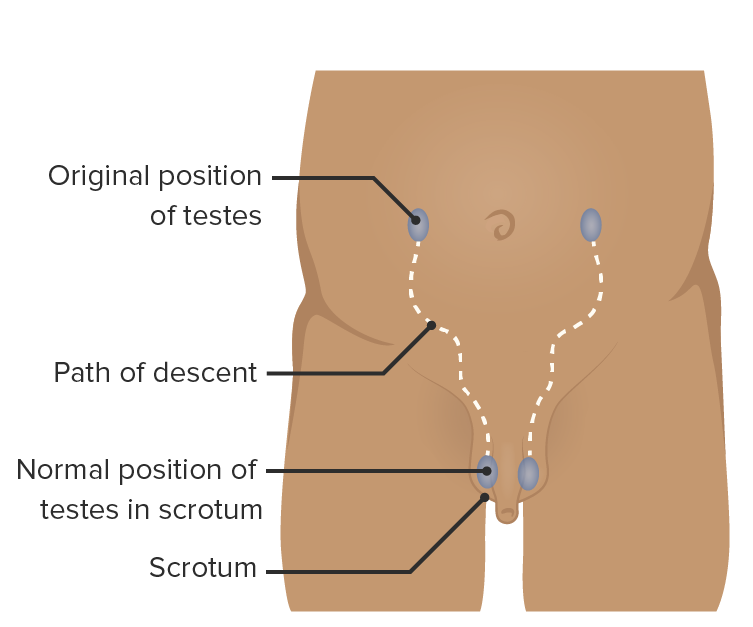Playlist
Show Playlist
Hide Playlist
Boundaries of the Inguinal Canal
-
Slides Boundaries of the Inguinal Canal.pdf
-
Reference List Anatomy.pdf
-
Download Lecture Overview
00:01 Now let's turn our attention to the boundaries of the inguinal canal. 00:05 Previously, we spoke briefly about its contents and how the deep and superficial inguinal rings are formed. 00:11 Now let's look at its boundaries where there is an anterior and posterior wall. 00:15 There's also a floor and a roof. Let's start with the anterior wall. 00:20 And as we can see here highlighted in green, this lateral section is formed by both the external and internal oblique muscles. 00:28 More medially we have the external oblique aponeurosis. 00:32 And remember, this is where the spermatic cord or the round ligament of the uterus passed through forming the superficial inguinal ring. 00:39 And then parts of that are forming the lateral and medial crura, around it. 00:44 Let's have a look at the posterior wall. 00:46 And with the posterior wall as the testes have penetrated through this layer, we have transversalis fascia, and that's forming the most posterior boundary. 00:55 Moving more medially, we can see how the aponeurosis of transversus abdominis and the aponeurosis of internal oblique from the conjoint tendon. 01:06 So here, if remember the anatomy around the rectus sheath, both these two layers now form anteriorly to the rectus sheath. 01:16 And as they form anteriorly to the rectus sheath immediately behind the superficial inguinal ring, they unite together, and we call this the conjoint tendon. 01:27 The superficial inguinal ring as we'll come to see later on is a potential area of weakness associated with inguinal hernias. 01:35 And this conjoint tendon, the union of the transverse abdominis and the internal oblique aponeurosis forms this tendon, a thickening band that helps to reinforce the area immediately posterior to the superficial inguinal ring. 01:49 It forms the posterior wall. 01:52 The final aspect we want to look at is the floor and really the floor was formed by the inguinal ligament. 01:57 This is the under curving of the external oblique aponeurosis as it runs from the anterior superior iliac spine, all the way down through to the pubic tubercle. 02:08 So that are the boundaries of the inguinal canal.
About the Lecture
The lecture Boundaries of the Inguinal Canal by James Pickering, PhD is from the course Anterolateral Abdominal Wall.
Included Quiz Questions
Which boundaries of the inguinal canal are formed by the transversalis fascia?
- Roof and posterior wall
- Roof and floor
- Anterior and posterior wall
- Floor and anterior wall
- Roof and anterior wall
Which structure forms the floor of the inguinal canal at the level of the superficial inguinal ring?
- Inguinal ligament
- Conjoint tendon
- Medial crus of external oblique
- Transversalis fascia
Customer reviews
5,0 of 5 stars
| 5 Stars |
|
5 |
| 4 Stars |
|
0 |
| 3 Stars |
|
0 |
| 2 Stars |
|
0 |
| 1 Star |
|
0 |




